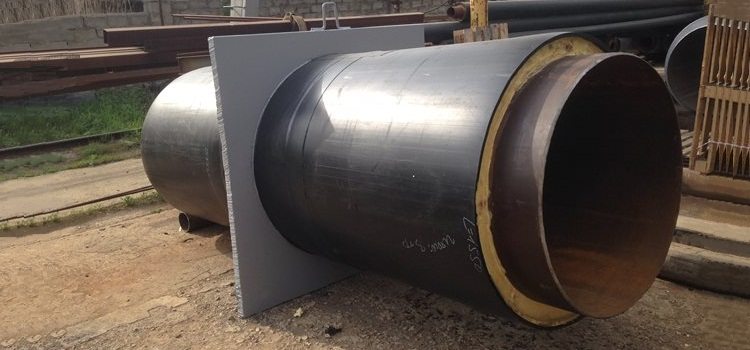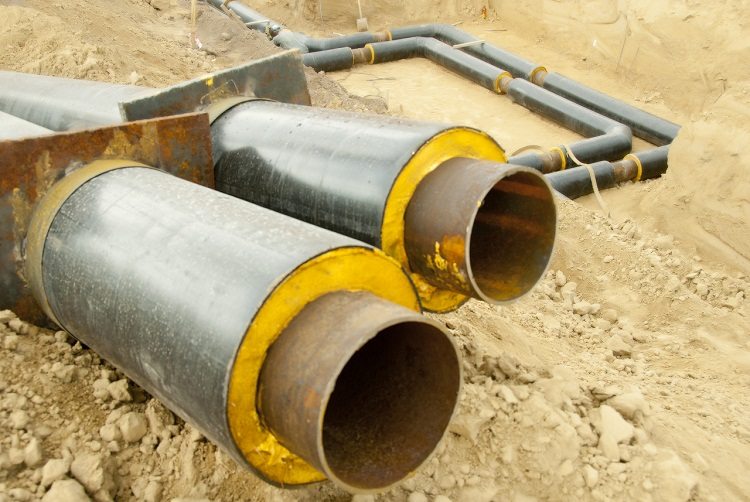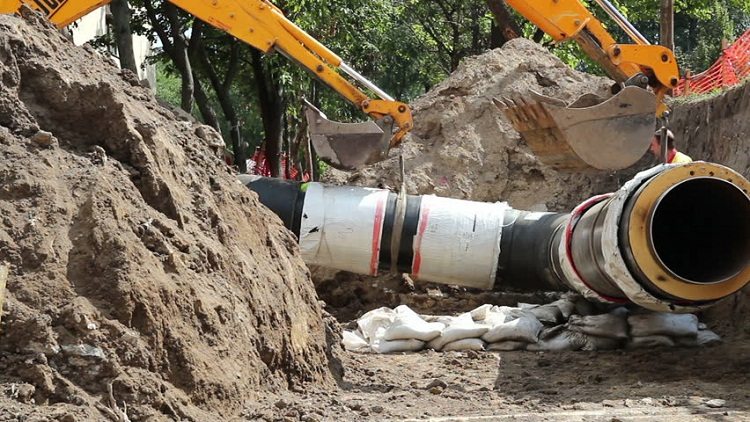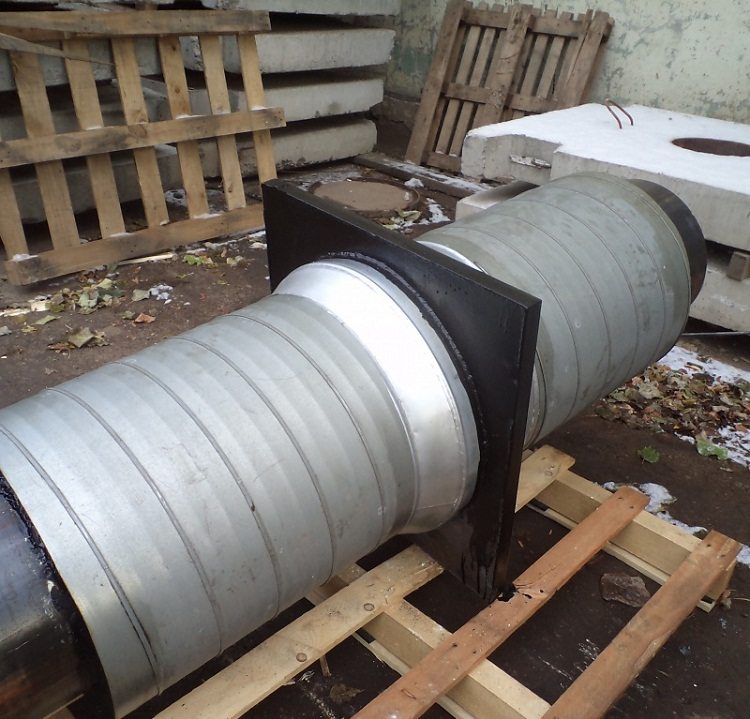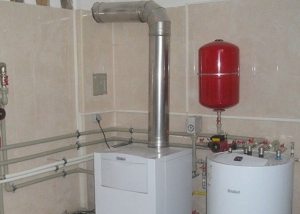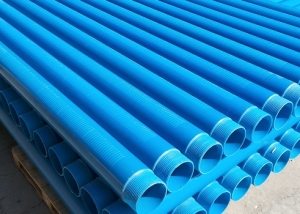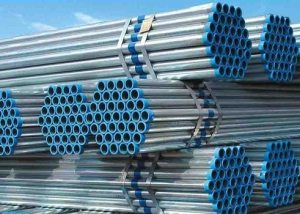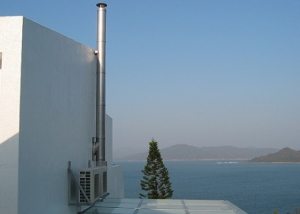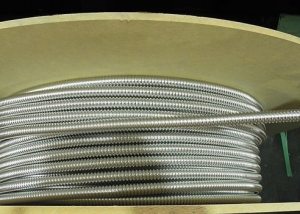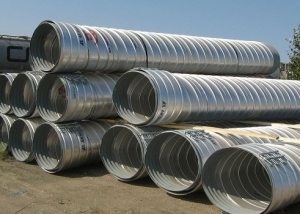Fixed support or NOP - the basis of any pipeline, its use strengthens the entire system. Due to the insulation of polyurethane foam (polyurethane foam), the fixed support during installation of above-ground communications receives thermal insulation protection. Galvanized shell - an additional tool to counter external influences. These fixed supports for pipes in polyurethane foam insulation have several varieties, but their differences are important to consider under the conditions in which they will be used.
Content
Key Features and Purpose
A fixed support is a steel supporting element that carries the bulk of the pipeline. Fixing to the supports counteracts the longitudinal-transverse displacement of the steel communication flanges. The PPU shell and galvanization protect against mechanical impacts of the NOP. For additional protection of the structure from the damaging effects of moisture, a shrink tape is used.
Advice! When purchasing supports, follow the standards and certification!
Fixed supports in PPU are available in several varieties, in accordance with GOST standards. According to the standards described in the documents, NOP is produced with a diameter in the range of 32 - 1420 mm.
Standardized products, after planting in the heating main, are concreted on a fortified base, therefore the fixed supports are often called “dead”, that is, planted “tightly”. The standards for the production of this denomination are described in detail:
- OST 36-94-83;
- GOST 30732-2006;
- GOST 14911-82.
For the manufacture of fixed supports for heat supply pipes in PPU, different materials are used:
- hot rolled steel sheet;
- steel billet (pipe);
- centralizer;
- thermal tape;
- polyurethane foam (PUF) for the shell;
- the shell (insulation) is galvanized.
NOP is also available in or without thermal insulation. There are also options for laying the pipeline:
- elevated pipeline;
- underground channelless communications in PPU.
Attention! As a hydraulic protection for supports for pipes in isolation polyurethane foam for channelless underground installation, standardization requires a polyurethane foam (or polyethylene) sheath. And for NOPs with overhead installation, a galvanized shell is used.
The length of the heating sections between the fixed supports is determined by standards, where the parameters of the compensators are taken into account. They are installed between the fixed supports in order to damp the temperature changes of the pipe in the insulation. The pipeline is fixed at several points in each section; for this, elements of a reinforced concrete frame are used for installation.
The purpose of the fixed support
The support of the stationary deepening is designed to take on the tension that periodically occurs in communications. It arises due to the expansion of bodies at temperature extremes.
Fixed supports for pipes in polyurethane foam insulation are produced by foreign and domestic enterprises. The so-called “pre-insulated” pipelines are used for the construction of uninterrupted water supply systems.In the pipes for heat supply, both cold and hot water, including a vaporous state, circulate.
Supporting elements with polyurethane foam - it is abbreviated as "PenoPolyUretan", a reliable polymer compound that can ensure the integrity and durability of pipes and communications. In the process of functioning are possible:
- thermal and amplitude overloads in temperature mode;
- negative climatic factors;
- mechanical damage;
- violation of operating standards, etc.
Note! The supports in the galvanized shell (above ground) and in the PUF (underground) guarantee a long and efficient operation, without the need for dismantling and repair, only when fixing with observance of the technology. The main elements of a fixed structure cannot be fixed without steel flanges and a heat-shrink tape that protects the supports under the PU foam pipe from corrosion. Heat-resistant gaskets and half rings are also used, which are connected after laying the pipes with screws.
The polyurethane foam insulation layer has unique properties, due to which heat losses in communications are reduced, and the surface layer of the support is reliably protected from corrosion. The sliding support for pipes in isolation with PPU supports a water supply system at the increased load of large temperature amplitudes. In this case, the load with the expansion and vibration of the pipe goes in all directions, including a slight movement of the soil.
The choice of the type of supports is dictated by the load and climatic conditions:
- single row roller;
- two-row roller;
- clamp;
- ball;
- dielectric.
Fixed supports for pipes in polyurethane foam insulation are considered universal, therefore, they are most in demand during the installation of heating mains. Such communications are able to withstand the extreme temperature of hot water and steam. The motionless support does an excellent job of compensating for pipeline loads, thanks to its specific design, as opposed to sliding. In addition, moving or sliding supports (without PUF) have a different type of thermal insulation:
- basalt wool;
- foam concrete.
Advantages of fixed supports with polyurethane foam protection
It is worth highlighting such advantages of the NOP:
- Fixed support for pipes with polyurethane foam is resistant to high loads.
- It does not collapse under the influence of chemical reagents.
- The design is well protected by insulation from metal corrosion from moisture in the soil and in the atmosphere.
- The support is able to withstand greater loads than unprotected structural elements or a sliding support for pipes without foam.
- Effective insulation protection against deformation of the surface and underground parts of the pipeline.
- Ease of operation, installation and dismantling of pipes (with proper design and compliance with the technology).
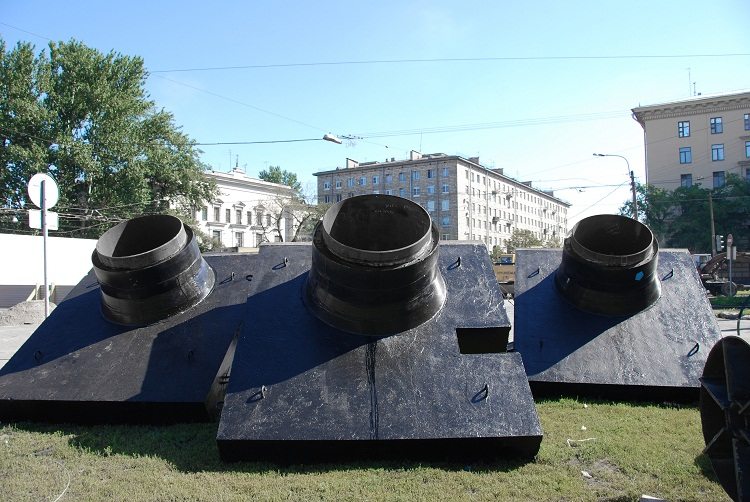
Supports in polyurethane foam insulation are available in different diameters, including large ones for laying large-scale highways
Domestic companies produce these products for the construction of heating networks, pipes for hot water and other utilities. The entire range must comply with GOST.
The marking of the NOP in the PUF contains technical data on the product: For example, the decryption of used bushes St 250x8 - 450x28 - 1 - PPU - PE means:
- seamless
- diameter 250mm and section 8mm;
- support size 450 × 28 mm.
- 1 type of insulation (polyethylene or non-frost-resistant jacket).
Other designations of support for PPU pipes:
- metal (ST - steel, C - galvanization);
- wall thickness S;
- sheath material E;
- outer diameter D;
- dimensions in millimeters;
- region C (1 - middle lane, 2 - north).
There are certain conditions for installing fixed supports. When installing the NOP in insulation for heating mains, they are fixed in a reinforced concrete frame in certain sections of the heating main divided into equal sections. They are determined in accordance with the design of the heat supply system, taking into account possible deformations of the “dead” and sliding supports and the maximum load. The length of the sections also correlates with the characteristics of the expansion joints of the heating mains and the vibration resistance of the moving elements.
This distance cannot be changed since it is introduced into the drawings during design. The load depends on the diameter of the support used for pipes in the foam insulation, some are able to withstand horizontal loads of up to 470 tons. Often they are reinforced with beams or channels.
